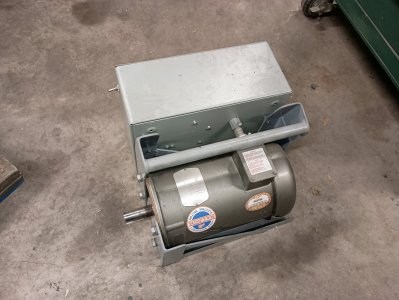- Joined
- Apr 13, 2023
- Messages
- 201
Helping a friend get a mill set up, and he's going to need some sort of phase converter - he has 240v single phase, but the mill is 3 phase.
A RPC would be easy but a used one is hard to find, and the few I've seen are obscenely expensive.
I'm wondering if a VFD would work in this specific situation. The mill has 2 3 phase motors - one for the spindle and one for the power feed. It's an integrated power feed, not an add-on, like a Bridgeport.
I've always heard that you can only run a single motor on 3 phase. Is that true for this case as well? The VFD would no be used for a speed control - it would always run at 60hz.
A RPC would be easy but a used one is hard to find, and the few I've seen are obscenely expensive.
I'm wondering if a VFD would work in this specific situation. The mill has 2 3 phase motors - one for the spindle and one for the power feed. It's an integrated power feed, not an add-on, like a Bridgeport.
I've always heard that you can only run a single motor on 3 phase. Is that true for this case as well? The VFD would no be used for a speed control - it would always run at 60hz.



